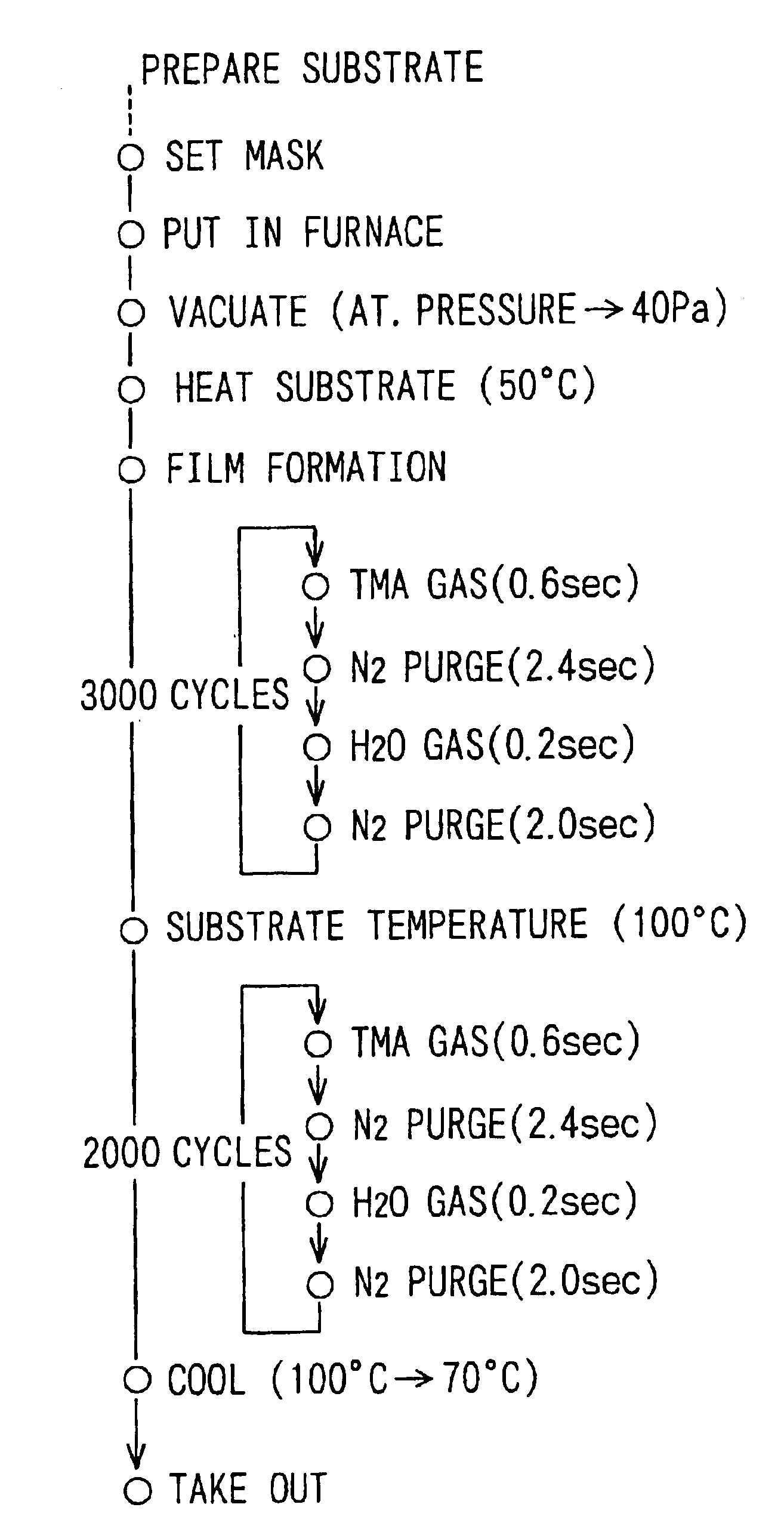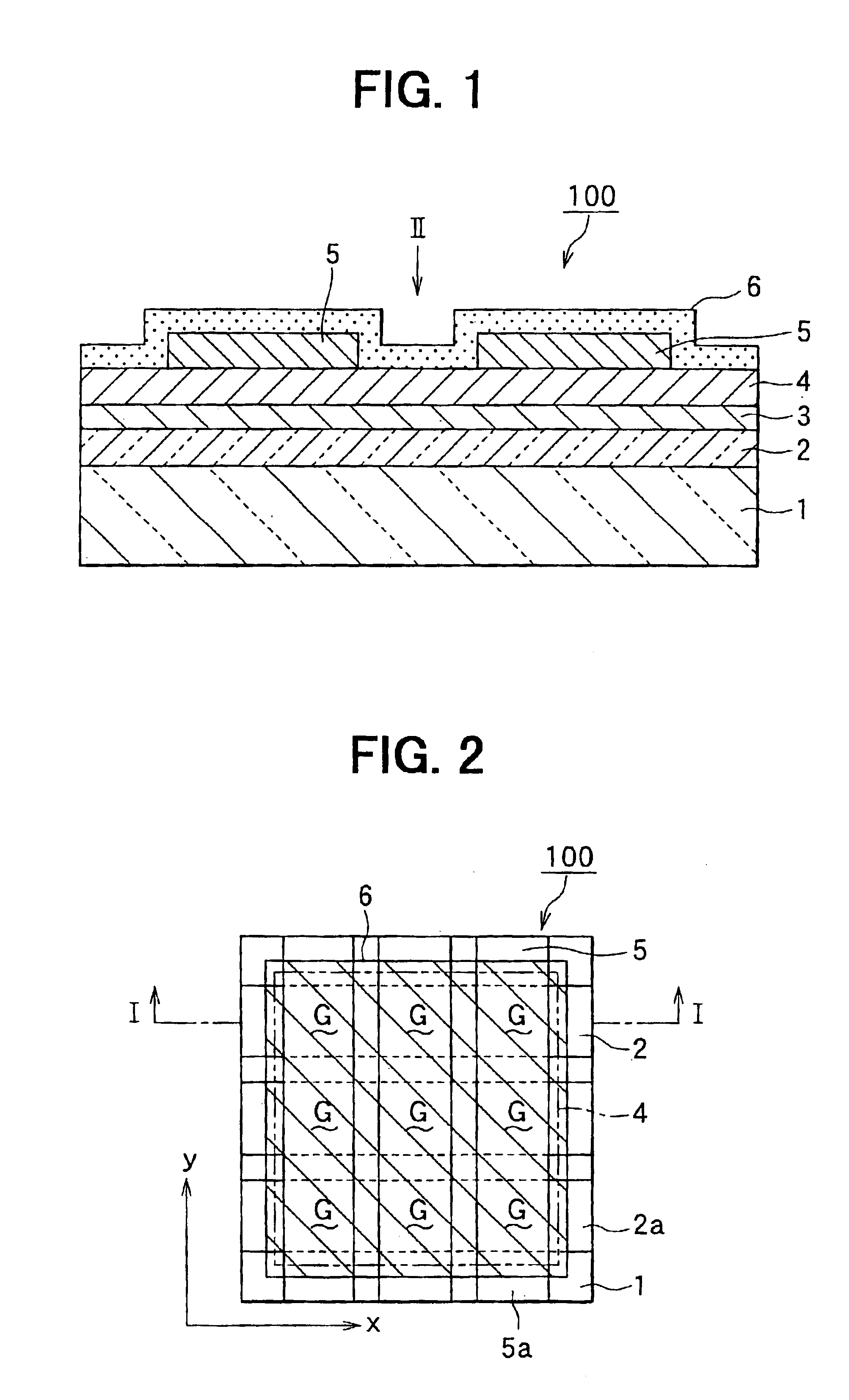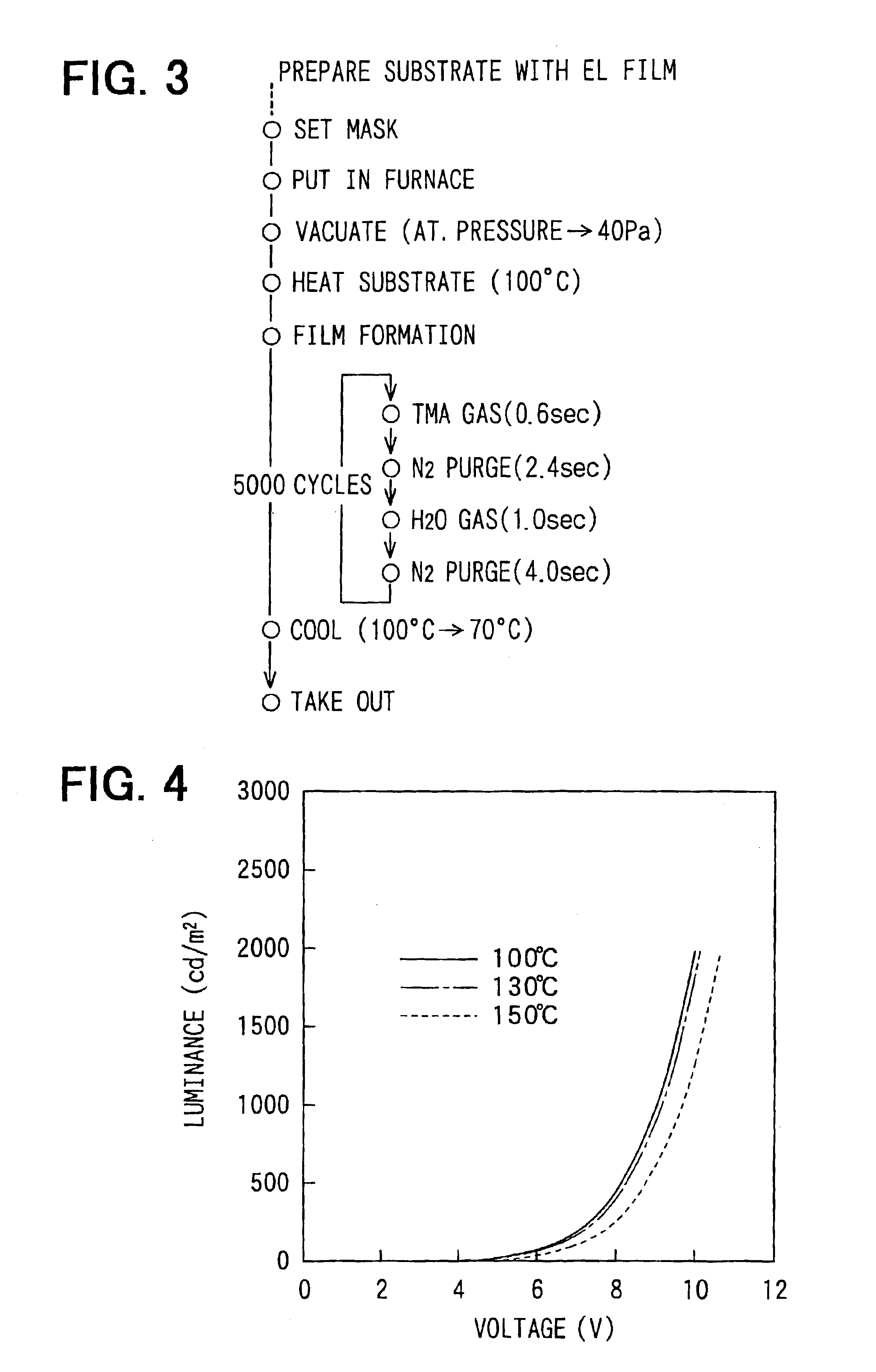Method for manufacturing organic EL device with protective layer
a technology of organic el and protective layer, which is applied in the direction of electroluminescent light sources, transportation and packaging, coatings, etc., can solve the problems of low aggravating the quality of display, and non-luminescent areas, so as to achieve sufficient coverage, improve the moisture resistance of the protective layer, and improve the coverage of the protective layer over the surface
- Summary
- Abstract
- Description
- Claims
- Application Information
AI Technical Summary
Benefits of technology
Problems solved by technology
Method used
Image
Examples
first example
[0103]In the first example, films laminated and constituting the stress relaxing film 6 are made of the same constituent elements, and the characteristics of the films are made different from each other by changing the film formation temperatures. FIG. 10 is a flowchart showing a process for forming the protective layer 6 in this example.
[0104]First, the glass substrate 1 (35 mm×45 mm) after cleaning was put into the reaction furnace. The reaction furnace was vacuumed to about 40 Pa and the glass substrate 1 was heated while flowing N2 gas at about 400 sccm to stabilize the substrate temperature at 50° C. TMA was held within a source material bottle at 28° C. and H2O was held within another source material bottle at room temperature (24° C.). Then, TMA and H2O were gasified under the reduced pressure and were introduced to the reaction furnace with N2 gas (flow rate of 400 sccm) functioning as carrier gas.
[0105]Specifically, the gasified TMA was introduced for 0.6 seconds and then N...
second example
[0110]In the second example, films for constituting the protective layer 6 are formed to have different film characteristics from each other by forming them from different constituent elements from each other. FIG. 12 is a flowchart showing a process for forming the protective layer 6 in this example. Specifically, the glass substrate 1 (35 mm×45 mm) after cleaning was put into a reaction furnace. The reaction furnace was vacuumed to about 40 Pa and the glass substrate 1 was heated while flowing N2 gas at about 400 sccm to stabilize the substrate temperature at 130° C.
[0111]Then, SiCl4 and H2O were gasified within source material bottles and were introduced to the reaction furnace alternately by N2 gas (flow rate of 400 sccm) functioning as carrier gas as follows. That is, after introducing gasified SiCl4 for 1.0 second, N2 gas was introduced for 2.4 seconds. After that, gasified H2O was introduced for 3.0 seconds and N2 purge gas was introduced for 6.0 seconds in the similar manner...
PUM
| Property | Measurement | Unit |
|---|---|---|
| RH | aaaaa | aaaaa |
| temperature | aaaaa | aaaaa |
| thickness | aaaaa | aaaaa |
Abstract
Description
Claims
Application Information
 Login to View More
Login to View More - R&D
- Intellectual Property
- Life Sciences
- Materials
- Tech Scout
- Unparalleled Data Quality
- Higher Quality Content
- 60% Fewer Hallucinations
Browse by: Latest US Patents, China's latest patents, Technical Efficacy Thesaurus, Application Domain, Technology Topic, Popular Technical Reports.
© 2025 PatSnap. All rights reserved.Legal|Privacy policy|Modern Slavery Act Transparency Statement|Sitemap|About US| Contact US: help@patsnap.com



